If you are a fan of Porsche, and you’ve been anywhere near the internet in the last month, it’s unlikely that you haven’t heard about the upcoming Seinfeld collection grouping of cars coming up for auction at the Gooding & Co. Amelia Island sale later this week. Many sites have shown you the list of cars, but no other site out there is showing you the in-depth behind-the-scenes of each Porsche in the lot list. So here we go, a car-by-car dissection of the cars Jerry is selling this week. Gooding & Co. have set the pre-auction estimate for the entire Seinfeld collection between $25 and $32+ Million US Dollars. If you want one, you’d better warm up your bidding paddle hand now!
Lot 031 – 1966 Porsche 911 (Est. $200,000 – 300,000)
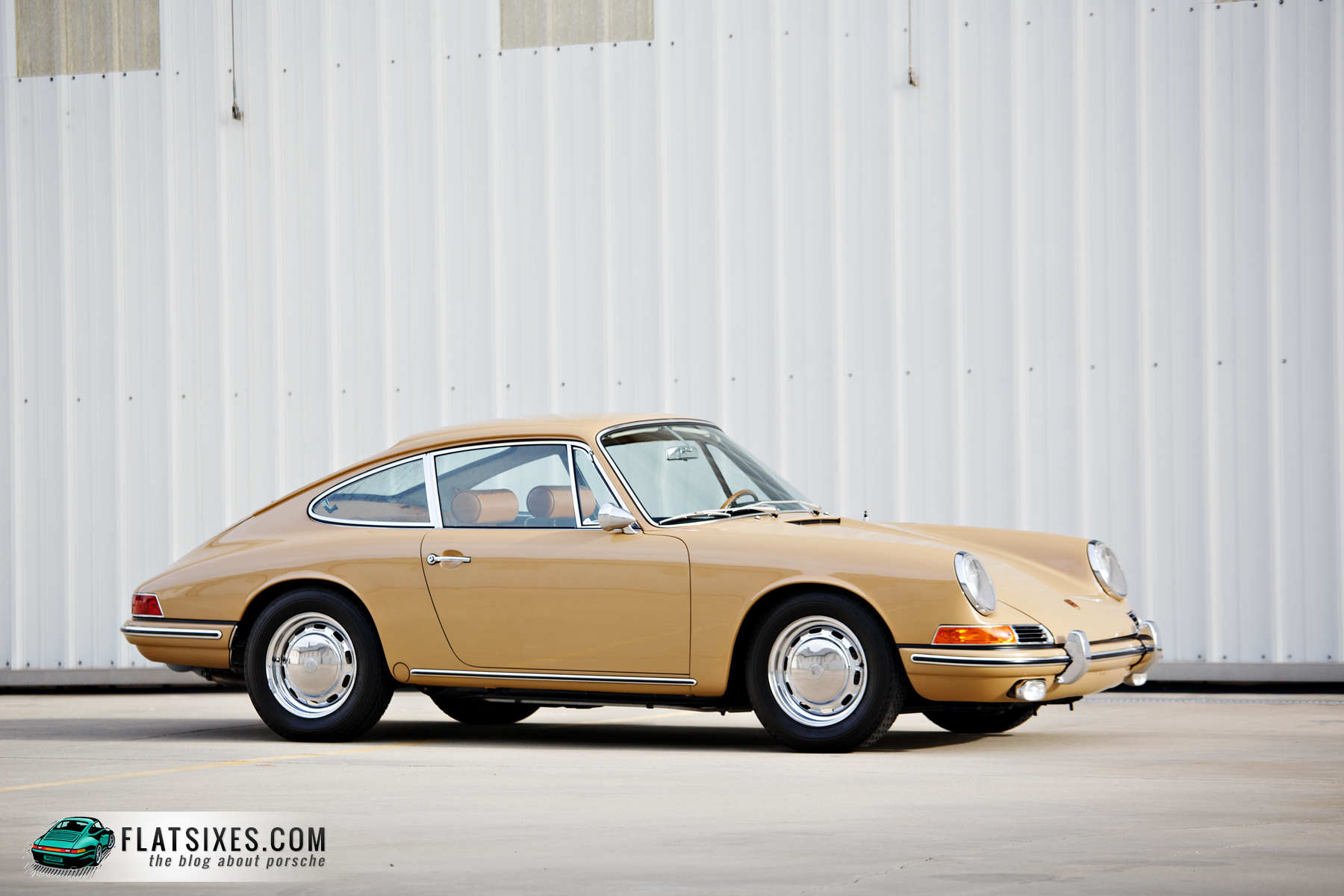
Chassis: 304182 Engine: 907419
Everything about this 911 screams originality. It’s been through five owners, and each of them has taken better care of this time-capsule car than the last. Every inch of this car is preserved as it was in the middle-1960s, from the really important bits like the running gear and paint down to the less important, but no less impressive original interior components and window seals.
This 911 was originally imported through Porsche Car Southwest in San Antonio, Texas, and sold through Vern Hagestad Motor Co., a VW-Porsche dealership located on West Colfax Avenue in Denver, Colorado. The original owner was James E. Pickens. It is thanks to Mr. Pickens that the car remains in such good condition, as he owned the car until the early 1980s and took impressive care to keep the car as original as possible.
When Pickens finally sold the car on in 1983, it was purchased by Porsche nut and high-level enthusiast, Mr. Tom Scott, a fellow Coloradan. Mr. Scott knew immediately that the car was highly original, and entered it in three consecutive Porsche Parade concours from 1984 to 1986, winning both ‘Best in Class’ and ‘Best in Division’ each time it was shown.
Scott sold the car to Dr. William E. Jackson, also hailing from Denver, and known for his exceptional taste in Porsches. At the height of his Porsche collection, Dr. Jackson had several examples telling Porsche’s history, and this car was among them. For 8 years, this astoundingly original 1966 911 sat among 4-cam Spyders and Turbo Terrors and even a rare Gmünd Coupe.
In 1999, Dr. Jackson moved this gorgeous Sand Beige car into the ownership of Mr. Myron Vernis of Akron, OH. Vernis is a collector of some repute, who is as enthusiastic as his tastes are eclectic. More importantly, he has been shepherd to many significant Porsches over the years, including the a number of 356 racing cars, and most recently the one-and-only 901 Cabriolet prototype. Vernis recently had this to say about the car: “An amazing, low mileage survivor, it’s every bit as nice as it appears in the photos.”
Vernis then moved the car on to Seinfeld’s ownership in 2005. To this day, the 911 features fewer than 19,000 miles, and is a ‘survivor’ in the truest sense of the word. The 911 retains original paint, interior, glass, rubber trim, the correct numbered engine, and original May 1966 date-coded wheels. Also included with the sale is a proper jack, tool roll, and operator’s manual.
For a 911 this nice, the price honestly seems just a little on the low side. I wouldn’t be surprised to see this one a bit over the $300,000 high estimate.
Lot 032 – 2011 Porsche 911 (997) Speedster (Est. $300,000 – 400,000)
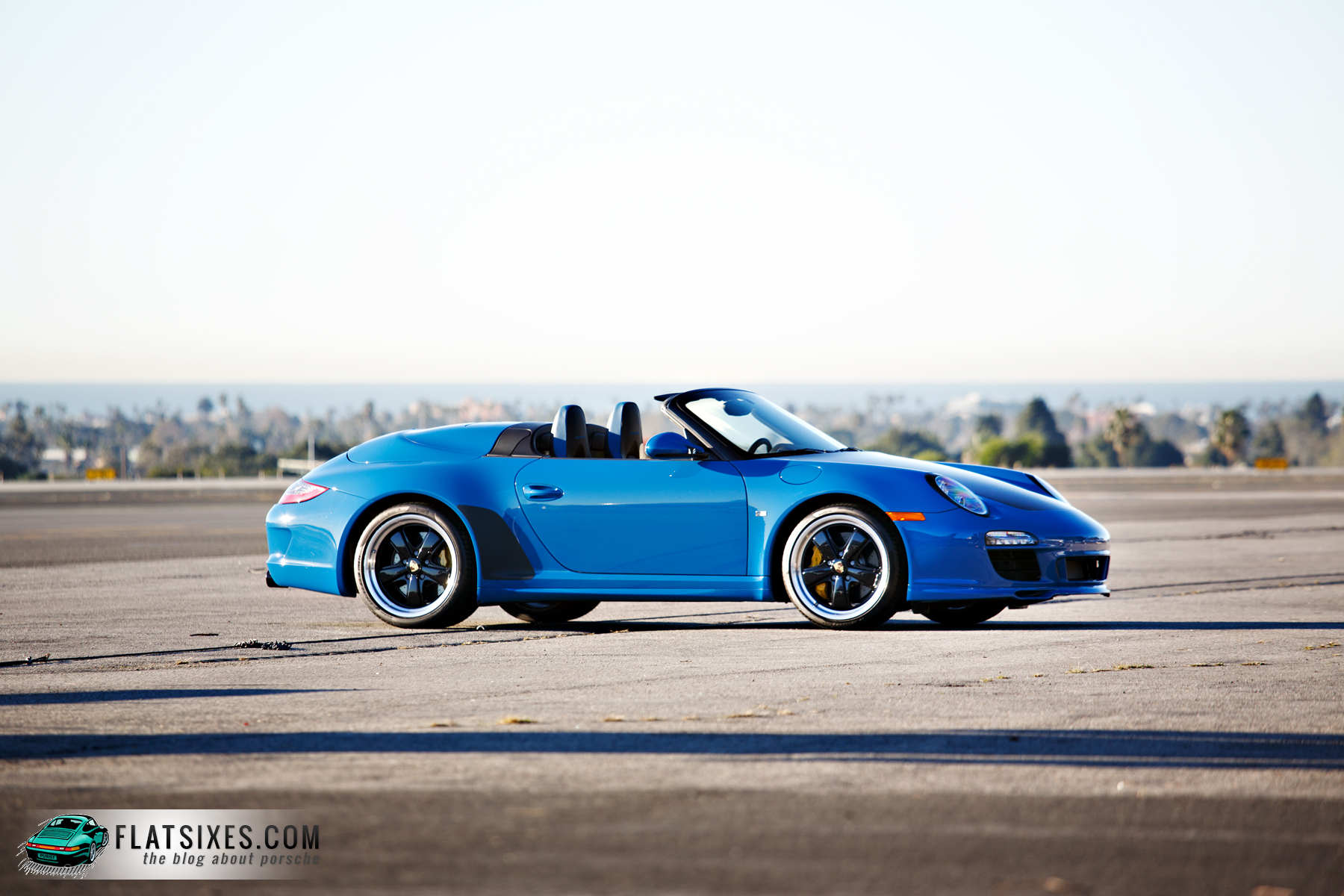
I’ve never really had much love for the 997 generation Speedster. Sure it was a low-production car, and it had some pretty unique parts, but underneath the questionably pretty bodywork, this is essentially a normal Carrera GTS. My personal tastes aside, this is a rare and desirable car in the market these days, and have been trading for much more than the original purchase price pretty much since production ended. It was among the priciest 997 generation cars ever sold, and makes for a great addition to a collection, especially when sat next to a 356 Speedster, an 89 Carrera Speedster, and a 964 Speedster.
This car has been a part of the Seinfeld collection since new, five years ago, and features only 4,844 miles on the odometer. This car looks just like it is brand new, and has a whole lot of interesting bits included. This 997 Speedster is number 009 of the 356 examples produced and one of just 100 imported for the US market. According to the factory window sticker, which is included with the sale, this Speedster was specified with Porsche Exclusive Customization Packages DZM and DZP and is finished in Pure Blue, a color developed specifically for the Speedster and the only shade available on the model other than white. This car also features a few Seinfeld-specific bits that Porsche included for the actor/comedian, like the GT2 RS-style bare carbon front trunk lid and copious bare carbon interior trim bits. This is a unique piece with a unique story.
Lot 034 – 1955 Porsche 550 Spyder (Est. $5,000,000 – 6,000,000)
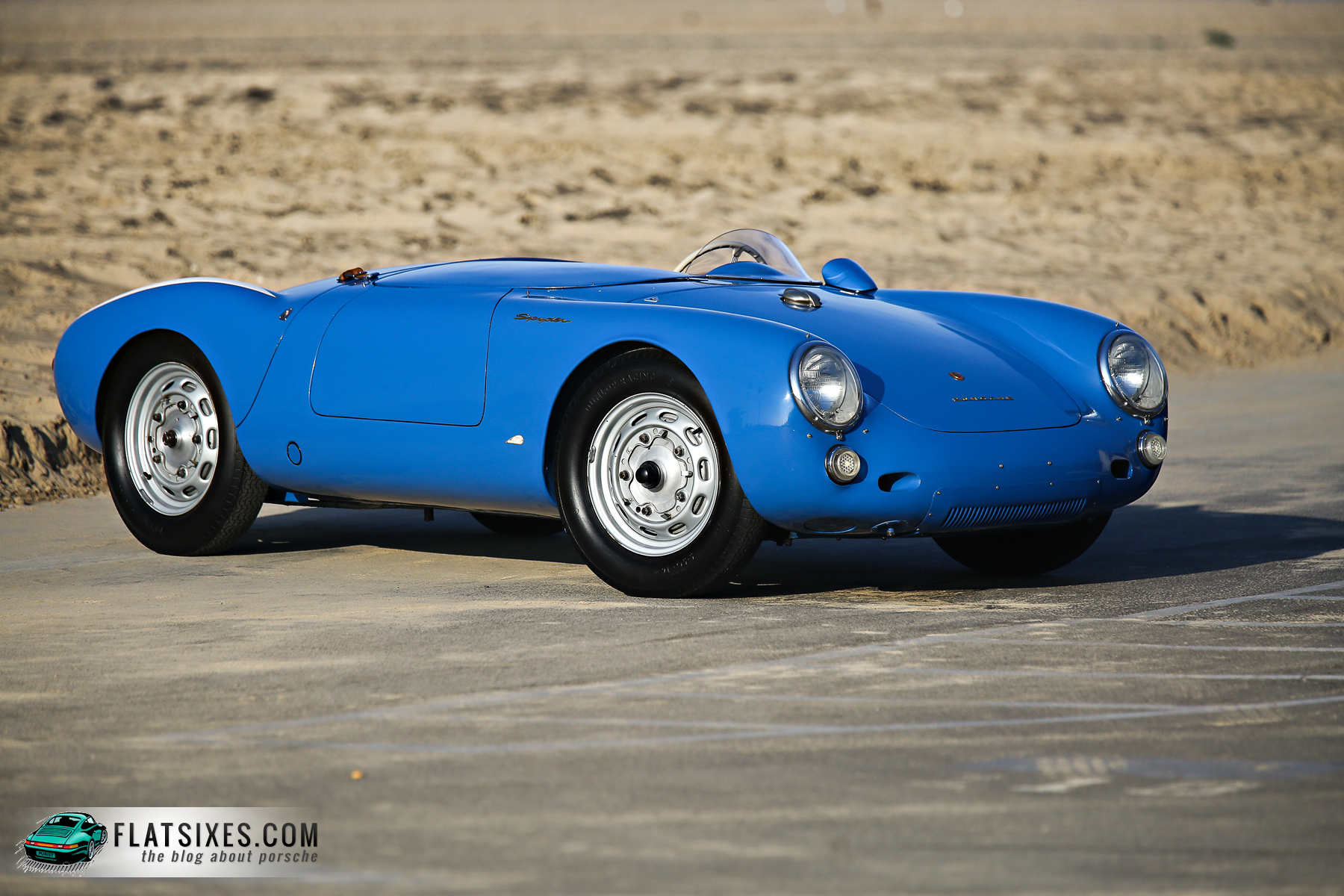
Chassis: 550-0060 Engine: 90063 Transmission: 10051
This might be the world’s most original 550 Spyder, featuring matching numbers and just over 10,000 original miles from new in 1955 (an average of only 164 miles per year!), and having only passed through four owners in all that time. This is a truly unique opportunity to buy a completely correct iteration of one of Porsche’s most iconic sports cars, and should be treated as such. This car is quite valuable, and the fact that it has never been used as a racing car makes it all the more unique.
This 550 was produced in the summer of 1955, painted blue with white tail stripes, and trimmed in beige vinyl. The car was fitted at the factory with engine 90063, a typ-547 Fuhrmann four-cam, and a four-speed transaxle numbered 10051, and then test-driven by Herr Mimler before being delivered to the US. The original owner isn’t known, in fact not much of the car’s history is known prior to 1963, but from then on, the car has only passed through three highly reputable hands.
1963 was when Lou Hilton picked up the car at a used car lot in Worcester, Mass, and added it to his stable of cars.
While little is known about the Spyder’s first few years, in the early 1960s a young car enthusiast named Lou Hilton discovered the blue Porsche on a used-car lot in Worcester, Massachusetts, and added it to his growing stable. Hilton owned planes and assembled a small personal collection of European automobiles that included a Bugatti Type 57C Stelvio, a BMW 507, and a Mercedes-Benz 300 SL Gullwing, among others. The 550 Spyder, however, was among the crown jewels of his collection. During his ownership, the 550 was repainted in its original colors, likely in the late 1960s.
The second owner, Joel Horvitz of Massachusetts, was a longtime collector and founding member of the 356 Registry. Horvitz was among the many Porsche enthusiasts who admired and longed to own Mr. Hilton’s 550 Spyder. He had purchased his first four-cam powered car some 20 years earlier, and had spent nearly 20 years searching for a 550 to call his own when 550-0060 came into his collection. It was in 1998, after actively pursuing the car for many years, that Horvitz managed to convince Hilton to sell him his prized Spyder.
In an article published in Hemmings Sports & Exotic magazine, Joel’s son Brian describes his father’s love for 550-0060 and his particular appreciation for the car’s authentic character. “Since he bought his first 356 in the early ’70s, my father had a number of very special cars; however, none represented his passion for collecting as completely as his Spyder,” Brian Horvitz said. “He had been after this very car since 1981, and realized his dreams in 1998. He knew that he wanted a Spyder, but I tend to think that no other Spyder would have done. This is not a pristine concours vehicle – the paint is cracked, the upholstery isn’t perfect. What it has is that palpable feeling of history. You stand next to it and you imagine yourself at the factory in 1955 watching the car being assembled.”
Mr. Horvitz, sadly succumbed to the effects of cancer in 2006, and in early 2007 Jerry, with the help of Alex Finigan [Paul Russell and Company], acquired the 550 Spyder from Mr. Horvitz’s estate. Mr. Finigan, who has known and helped maintain 550-0060 since the mid-1970s, is among the car’s many admirers. When the car arrived in Mr. Seinfeld’s collection, it had covered just 9,896 miles from new. Over the past nine years it has accrued less than 500 additional miles and benefited from attentive care and maintenance in the hands of two respected Porsche specialists – Joe Cavaglieri and Adrian Gang. During its time in the Seinfeld Collection, the Spyder has been exhibited on rare occasions. In 2009, it was featured in the Porsche Exhibition Hall at the Los Angeles Auto Show, and in 2012 it was loaned to Porsche for a special display in Pebble Beach during the Concours weekend.
Today, the car remains in exceptionally original condition, wearing its decades-old blue paint and retaining its wonderful, well-preserved upholstery – a special ribbed vinyl material with a patina and character that would be impossible to duplicate. The elemental cockpit features the correct banjo steering wheel and three large VDO gauges, with their elegant and distinctive green typeface. Under the front compartment one finds the patinated aluminum fuel tank, with original felt under the securing straps and a VDO sending unit dated February 1955. In the engine bay, the matching-numbers engine and transaxle are present, as is the original chassis number stamping and rarely seen Karosserie Wendler Reutlingen body tag. In each and every area of the Spyder magnificent details abound, from the proper horsehair weather stripping to the cracked white paint of the tail stripes.
It is extremely rare to find a 550 with this kind of originality. Many of these cars have had body damage, blown an engine, or suffered some other kind of racing-related damage. Aside from the ages old repaint, this car is essentially in as-used condition over all these years. This might be the only one left in this kind of shape, making it highly desirable among collectors and possibly even Porsche. The price is among the highest I’ve ever seen for a 550 Spyder, but would not be out of sorts for a car of this caliber.
Lot 035 – 1957 Porsche 356A Speedster (Est. $500,000 – 600,000)
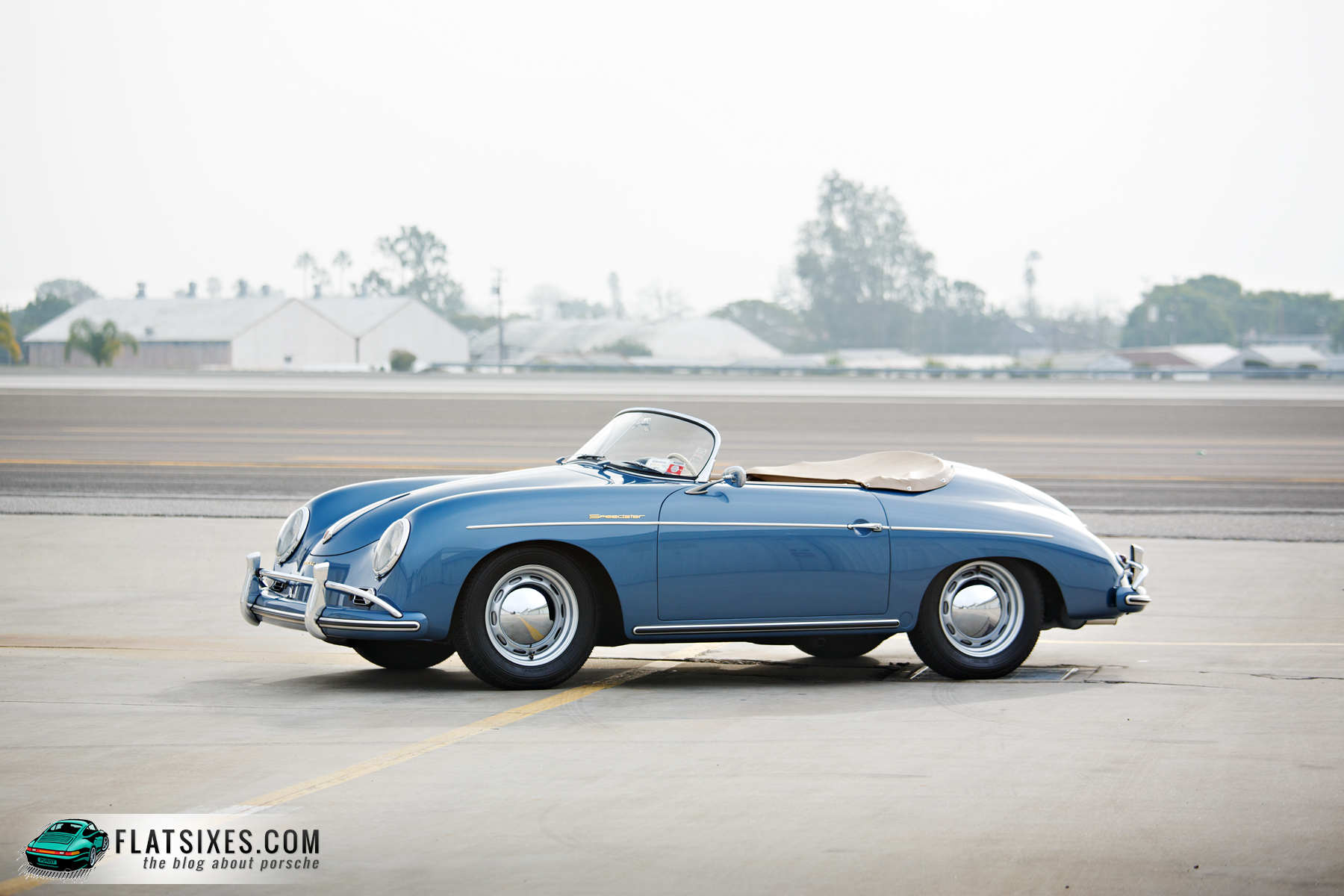
Chassis: 83124 Engine: 64919
This Speedster was imported through Hoffman Motors, as most 356s were at the time, and was used for many years by the second owner in California. The second owner acquired the car in nearly new condition as a used car in 1958, and used the car regularly for nearly two decades. After 20 years of hard use, the Speedster was put away until 2009 mothballed in storage. In 2009, the owner of the car called Tom Scott (yes, the same Tom Scott) to see if he would like to purchase the car. Scott worked a deal and the car became his.
It didn’t take long for Scott to start restoring the car to concours quality. Taking the car down to metal, and then repainting the car in original aquamarine blue was a great decision, as the car looks pristine these days. The car was recreated to original specs by a number of excellent shops, with Victor Miles handling the rechroming, North Hollywood Speedometer redoing the gauges, and Auto Weave handling the upholstery, top, side curtains, and carpets. The car was completed in time for the Porsche Parade Concours in 2010, where it received First In Class honors in the 356 class, and Best of Show in the ‘Restoration’ group. Beyond that, the car received 299.3 points, which remains a record for most points earned by a restored car.
Mr. Seinfeld purchased the car from Tom Scott after the concours win later in 2010. Today, the car retains its original matching-numbers engine, stamped body panels, as well as early 1957 date-coded components such as the fuel tank, VDO sending unit, and Sudrad wheels. It is offered with a concours-quality tool kit, jack, and handbook set, including the owner’s manual, supplemental Speedster driver’s manual, and Reutter and Porsche coachwork pamphlets. A Porsche Certificate of Authenticity and a copy of the original factory Kardex also accompany the sale.
Lot 036 – 1974 Porsche 911 Carrera 3.0 RSR IROC “Revson” (Est. $1,200,000 – 1,500,000)
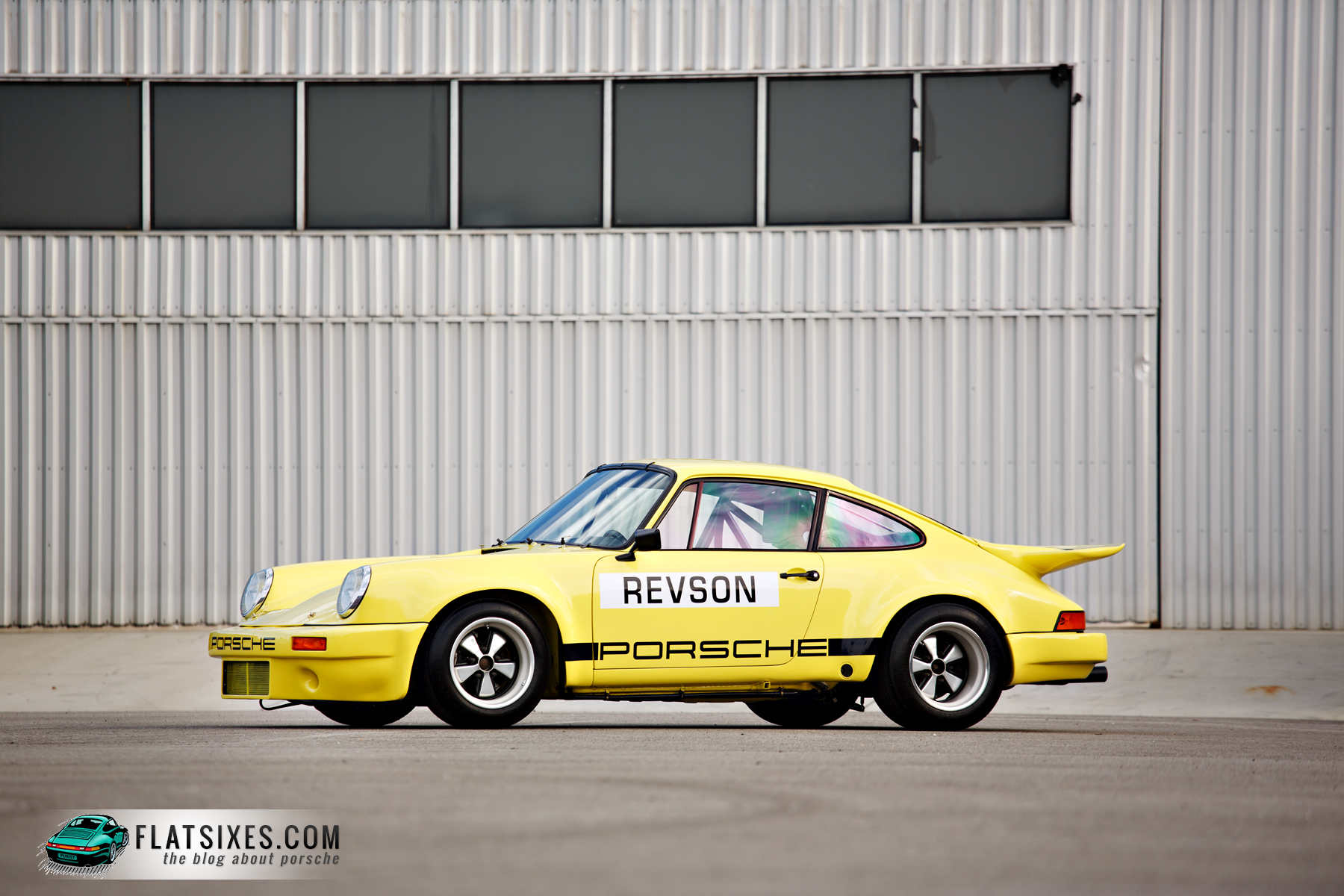
Chassis: 911 460 0016 Engine: 6840034
This IROC Porsche is one of only 15 built for the 1974 season of racing, and was raced in-period by Peter Revson, Cale Yarborough, Gordon Johncock, George Follmer, Elliot Forbes-Robinson, and Milt Minter. The car features a well documented history and a provenance unlike any other. The car is beautifully restored, consistently well maintained, and believe it or not, retains full road legal registration.
Created specifically for Roger Penske’s genius IROC series, this RSR was used by 12 of the top drivers from four main disciplines of racing: Peter Revson, Emerson Fittipaldi, and Denis Hulme from Formula 1; Mark Donohue and George Follmer from SCCA; Bobby Unser, A.J. Foyt, Gordon Johncock, and Roger McCluskey from USAC; and Richard Petty, Bobby Allison, and David Pearson from NASCAR. Penske was already in good standing with Porsche, having won a couple of SCCA Can Am championships in 917s, so he and star driver Mark Donohue worked to develop this IROC iteration of Porsches RSR (essentially a hybrid of 1973’s 2.8 RSR and 1974’s 3.0 RSR, using parts from both).
This car is the earliest chassis number of all the IROC RSRs, and was originally fitted with engine #6840021 (no longer with the car). After the RSR served its time in the IROC championship, the car was sold to Grey Egerton for use in a number of Trans Am and IMSA GT races throughout the 74 and 75 seasons under the Pharr Yarns team name. The car won an IMSA race at Laguna Seca, and featured well in a number of other races, grabbing a few podiums and class wins along the way. After the car had served its life as a racer, Egerton sold it to famed SoCal dealer Vasek Polak.
Polak fitted the car with an earlier 2.8 liter engine, but unfortunately the car served most of its time with Vasek in static storage. It wasn’t until Vasek’s death in 1997 that the car was resurrected from Polak’s storage rooms by the next owner, Tom Linton. Linton immediately set about restoring the car to its original Yellow IROC RSR livery, and the car was taken down to bare metal. The fenders had been widened to regular 3.0 RSR spec while in Egerton’s care, but the original tub was intact and most of the sheetmetal was as original. The engine currently fitted to the car was originally in the Sahara Beige IROC RSR, as the original engine is whereabouts unknown. Linton competed in Rennsport I and II with RSR 911 460 0016.
In 2005, Mr. Seinfeld purchased the car and continued its use both on street and track. Over the years, the car has been maintained well by the incomparable Adrian Gang. It is possible that this was the first IROC RSR built, as well as the first 3.0 liter 911 built, and has significant driver history, making this a unique collector piece.
RACE HISTORY
IROC, Race 1, Riverside, October 1973, Revson, no. 3 (3rd Overall)
IROC, Race 2, Riverside, October 1973, Johncock, no. 10 (DNF)
IROC, Race 4, Daytona, February 1974, Follmer, no. 4 (DNF)
Trans-Am, Lime Rock, May 1974, Forbes-Robinson (7th Overall)
IMSA GT, Laguna Seca, Race 1, May 1974, Forbes-Robinson, no. 81 (1st Overall)
IMSA GT, Laguna Seca, Race 2, May 1974, Forbes-Robinson, no. 81 (3rd Overall)
Camel GT, Ontario 4 Hours, May 1974, Egerton/Aase, no. 81 (8th Overall)
Mid-Ohio 5 Hours, June 1974, Egerton/Forbes-Robinson, no. 81 (DNF)
Charlotte 300 Miles, August 1974, Forbes-Robinson/Yarborough, no. 81 (29th Overall)
Laguna Seca 100 Miles I, May 1975, Forbes-Robinson, no. 81 (3rd Overall)
Laguna Seca 100 Miles II, May 1975, Forbes-Robinson, no. 81 (3rd Overall)
Riverside 6 Hours, May 1975, Forbes-Robinson/Minter, no. 81 (5th Overall)
Daytona Finale 250 Miles, November 1975, Forbes-Robinson, no. 81 (7th Overall)
Lot 037 – 1989 Porsche 911 Carrera Speedster (Est. $250,000 – 325,000)
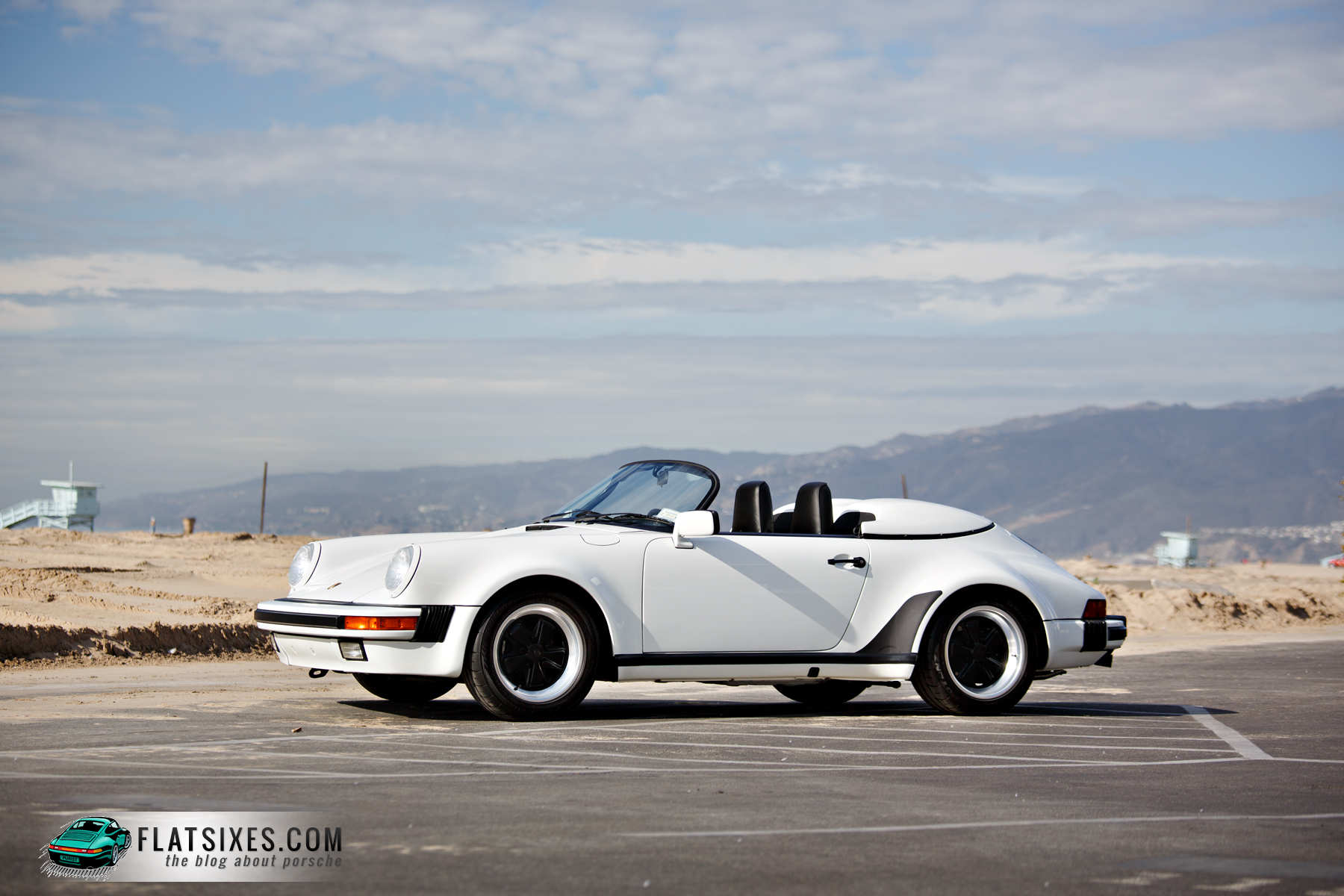
Chassis: WP0EB0915KS173287 Engine: 64K05848
This is an extremely low-mile Speedster, with only about 3,800 miles on the chassis. This Grand Prix White beauty could be one of the best-preserved Carrera Speedsters remaining, and could be an excellent addition to any collection. Everything about it screams classic from the low cut windshield to the wide Turbo-look bodywork, making the Carrera Speedster a dearly held piece among Porsche fanatics. As noted in the original owner’s manual, the Porsche was delivered to George Follmer Porsche in Montclair, California, and sold to original owners Richard and Linda Daniel. Jerry Seinfeld purchased the Speedster in 2013 with approximately 3,400 miles on the odometer and has enjoyed the Porsche sparingly since.
Believed to retain its original paint and interior and presenting essentially as a new car, this Speedster is equipped with desirable options such as a limited-slip differential, electric sport seats, Blaupunkt Reno cassette player, and a luggage compartment in place of the rear seats. This particular Speedster is not equipped with the optional, and common, air-conditioning, which reduces weight and improves the aesthetics of the engine compartment. The Porsche’s factory-applied VIN stickers are visible throughout and underline the highly authentic presentation that comes from decades of careful stewardship. Factory documentation originally delivered with this Speedster remains with the car, including manuals and the original Speedster supplement, along with an accompanying letter to Speedster owners from Porsche Cars North America. Also included are the original tool kit, space-saver spare tire, and its corresponding air pump.
Lot 039 – 1990 Porsche 962C (Est. $1,500,000 – 2,000,000)
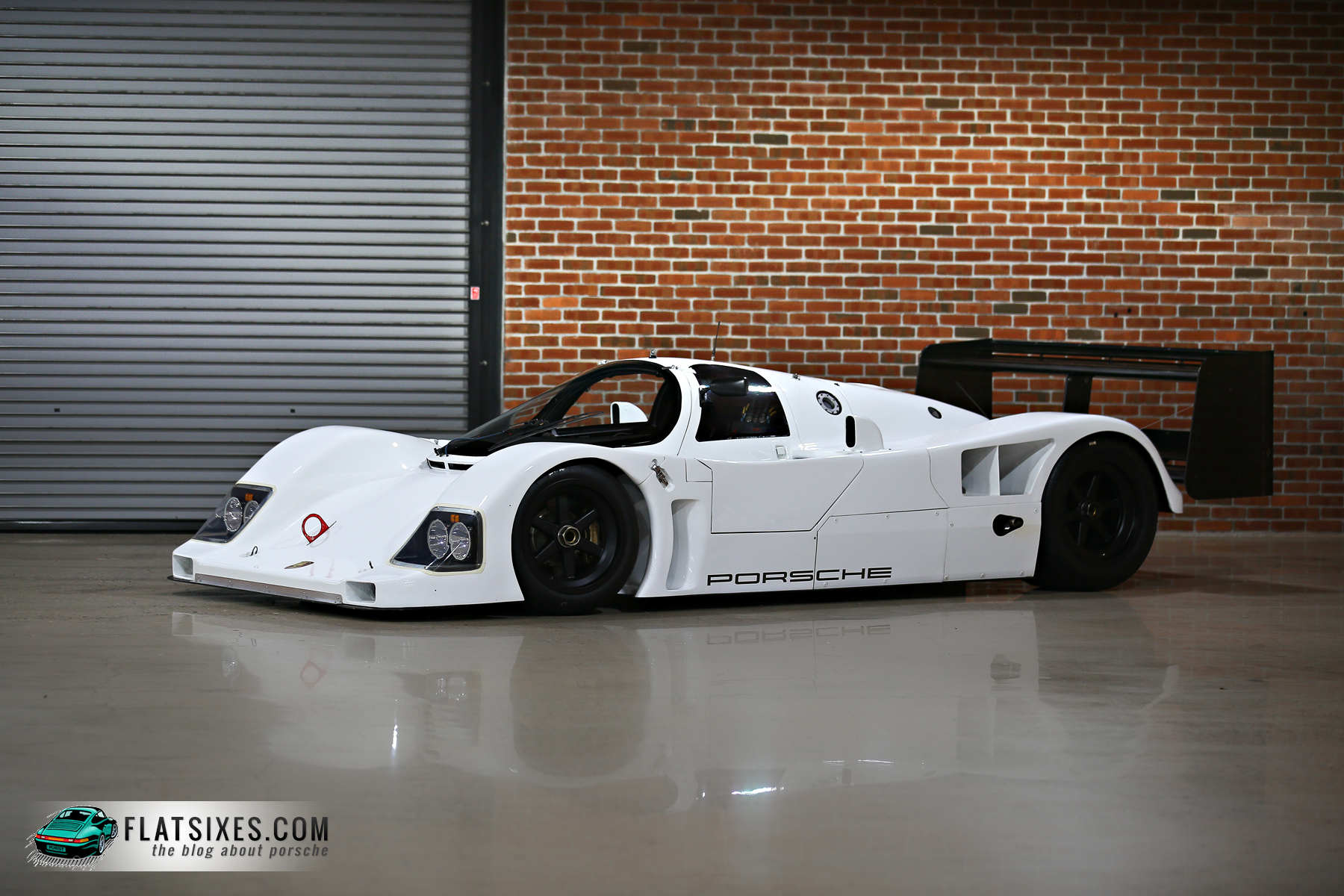
Chassis: 962-012
This late production 962 was built for Joest Racing to campaign in a joint Interserie and FIA World Sports Prototype Challenge series for the 1990 and 1991 seasons. The rear bodywork is much different from what you normally expect to see on a 962, and instead of the integrated rear wing, this car features a much larger separate rear wing, which creates a lot more downforce than the earlier cars, which were optimized for streamlined top speeds. Other changes for 1990 included higher output engines, and improved radiator flow guides. Joest was the de facto factory-supported team after the factory ‘officially’ withdrew from competition following the 1988 season, making this one of the best prepared 962Cs in the world at the time.
This car was sponsored by Blaupunkt and campaigned as Joest Racing’s primary car for the 1990 season, with former Porsche works team member Bob Wollek and German F3 champion Frank Jelinski as its drivers. According to Joest Racing’s records, 962-012 raced in all nine rounds of the 1990 World Sports-Prototype Championship season; its best result was a 4th Place finish at Silverstone. At the end of the season, Joest Racing placed 5th in the team championship standings, with 8.5 points, while 962-012’s drivers, Wollek and Jelinski, tied for 13th in the drivers’ championship.
In 1991, 962-012 participated in the European Interserie Cup with Sachs sponsorship. In three of these four Interserie outings, the 962C was driven by “John Winter” – the pseudonym often used by German businessman and racer Louis Krages, who had been part of the Joest Racing Team during its victories at Le Mans in 1985 and Daytona in 1991.
In 2001, while part of Joest Racing’s private collection, 962-012 was restored to as-new condition and fitted with the famous Singer-developed Doppelflügel and revised bodywork. Five years later, Jerry Seinfeld acquired 962-012 directly from Joest Racing. Over the past decade, the 962C has been carefully maintained by Joe Cavaglieri and has seen only occasional track use during private outings at Willow Springs Raceway. This is your chance to own what is likely one of the fastest and highly developed 962s in private hands. This would make an excellent vintage racer, and would make a good effort of cleaning up the class at a Monterey Historics event, especially if you were to hire a hotshoe factory racer to do the driving for you.
Lot 039 – 1963 Porsche 356B 2000 GS/GT Carrera 2 Coupe (Est. $1,000,000 – 1,400,000)
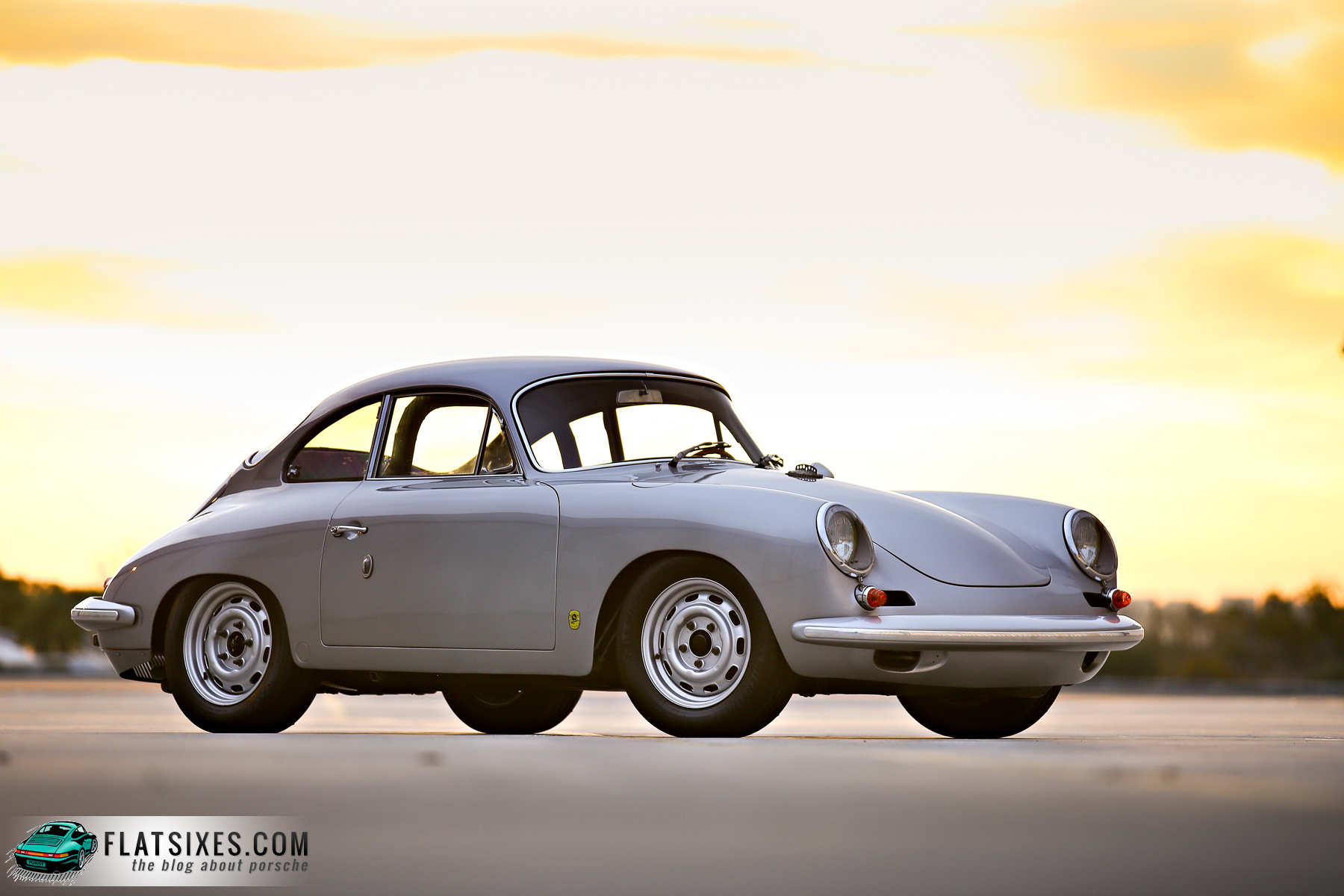
Chassis: 122561 Engine: 98016
This 356 is the ultimate iteration of the chassis, featuring one of the best engines Porsche produced at the time, and certainly one of the most exciting engines Porsche has ever produced. This Carrera 2 was equipped from new with silver paint, blue interior, lightweight aluminum doors, plexi windows, and a 741/20A transaxle. The car was originally finished in late 1962 and sold through D’Ieteren Frères to a Belgian by the name of Politzer. Not just over a year later, and the car was returned to the factory for upgrade to the new style engine. This chassis was originally fitted with a Typ 587/1 engine (number 97175) that produced 130 horsepower, but Porsche had just introduced the Typ 587/2 engine that made use of 160 horses. Porsche removed an engine from one of their 904 prototypes (904-003) and installed it into the back of Mr. Politzer’s Carrera 2. Only 33 examples of the 587/2 engine are believed to have been built, but I can only imagine how much fun it would be in the back of a 356.
For a few years after, the car floated around Europe with a few undocumented short-term owners, or so it is believed, before transferring to the US and into the ownership of famed Porsche collector and racer, Mr. Grady Clay. At the time, Mr. Clay also owned a number of significant Porsches, including a 904, an RS60, a Carrera 2 Cab, numerous 911s, and a handful of spare four-cam engines.
In 1986, Mr. Clay sold this Carrera 2 to Robert Pass of St. Louis, and the car was then acquired by Richard Freshman of Los Angeles, California. Invoices in the car’s file prove that the engine and transaxle were overhauled by famed four-cam specialist Bill Doyle of Rennwagen Motor Company. In 2002, the car was sold, along with Freshman’s other cars and rare parts at auction, and moved into the collection of a Swiss Porsche enthusiast. From there, the Porsche was exported to the UK, where it was an integral part of two prominent private collections and benefited from maintenance by leading specialists Jim Stokes Workshops Ltd. and DK Engineering. In 2008, the Carrera 2 was acquired by Cavallino Holdings, and over the next few years was serviced by Canepa in Scotts Valley, California. Since joining The Jerry Seinfeld Collection, the Carrera 2 has enjoyed regular exercise and care. According to an invoice on file, it was carefully detailed and mechanically sorted by Southern California 356 specialist Jim Rinker.
This car features many of the best options for a 2 liter Carrera at the time, including the Sport II “Sebring” exhaust with matching rear muffler skirt, large long-range fuel tank with external filler, KPZ-style riveted steel-center-aluminum-barrel competition wheels, aluminum doors and lids, a number light mounted on the passenger’s door, GT bucket racing seats, a roll bar, and Nardi steering wheel. This has got to be one of the most exciting and fun-to-drive 356 models ever produced, and with only perhaps 24 356s fitted with the 587/2 engine, this is a highly rare opportunity to purchase.
Lot 040 – 2000 Porsche Carrera GT Prototype (Est. $1,500,000 – 2,250,000)

Chassis: 9R3/M 001
Beginning life as an engine destined for Formula 1, the V10 that eventually found its way into the Carrera GT production car was truly a racing-based piece. After the Porsche V10 for Footwork Formula 1 proved to be less than successful, Porsche moved the engine into a potential early 2000s attack at LMP racing. The project died for a number of reasons, which you can read about more in-depth here. After the LMP2000 project was killed off, the engine sat around the race shop waiting for something to go in. It was only a few years later when Porsche realized it would be perfect for a production supercar
While Dr. Wiedeking did not initially support Porsche’s new race car program, he wasn’t blind to the competitive nature of the production car business, and when it became apparent that there would be a slate of new sports cars coming from rivals at Aston Martin and Mercedes-Benz, among others, Dr. Wiedeking took action. Porsche decided to build a top-line sports car, and its engineers were given no restrictions in its development as long as the vehicle demonstrated the design and engineering might that made Porsche such a fabled marque.
While no currently existing parts were mandated for use in the Carrera GT design, one of the first decisions made was to integrate the V-10 engine from the LMP 2000 car into the new model, a logical choice given that much of the competition department for Porsche was now working on the car’s development.
Two Carrera GT prototypes were built, both relying heavily on Porsche’s racing parts bin. Suspension components and the gearbox from the GT1-98 were mated to the V-10 engine and a space frame was built out of high-strength aluminum. Porsche installed 15″ carbon ceramic brakes behind newly designed, center-lock, aluminum 19″ and 20″ wheels wearing 265 and 335 section-width Michelin Pilot Sport tires. Though intended solely as a concept car, Porsche wanted it to appear as production-ready as possible; therefore, power steering and ABS braking systems were adapted to fit.
The styling of Porsche’s new supercar was assigned to a team headed by Harm Lagaay. His task was made difficult by Porsche’s diverse offerings, which didn’t give a clear direction for the exterior design of such an important car – one that would be placed at the top of the model range. “Our brand is not identified by any distinct element such as a radiator grille,” he remarked at the time, “so its personality derives from the way we design the details and handle the surfaces.” Both Porsche’s newly opened Los Angeles-based US design studio and the German styling department were given two days to sketch concepts that would express the qualities necessary for the new Carrera GT. The winning design had to express the extreme aerodynamic and technical requirements of the project while looking as much like a member of the Porsche family as possible. The results can only be described in superlatives, and it is safe to say that the Carrera GT hasn’t aged a day in the 15 years since the design’s birth.
Jerry Seinfeld, who was fortunate enough to purchase this piece of Porsche history directly from the company in January 2007, is the car’s sole private owner. Understanding the Prototype’s significance and admiring the unique story of its development, this car has remained on display with the rest of Mr. Seinfeld’s remarkable collection of vehicles.
Mr. Seinfeld recalls, “I was able to acquire this car with the help of Grant Larson, who poured his life into the design. This is the only existing prototype of the Carrera GT. Walter Röhrl drove it down the Champs-Élysées at 6 am on September 28, 2000, on his way to the Paris Auto Show. The ultimate tribute to one of the greatest Porsches ever.”
Importantly, before the car was sold to Mr. Seinfeld, Porsche removed the ECU from the Prototype’s engine-management system, and therefore the car has been, and remains, undrivable. Please note that the buyer of this car must, as a condition of purchase, agree to certain special undertakings and other terms and conditions which include, among others, that the car may not be driven and that any future sale by such buyer is subject to a right of first refusal in favor of Porsche. Each bidder on this car is strongly encouraged before bidding to review these special terms and conditions, which are available from any Gooding sales specialist prior to or at the auction, or at the Gooding office at the auction.
Lot 041 – 1997 Porsche 911 (993) Cup 3.8L RSR (Est. $1,200,000 – 1,500,000)
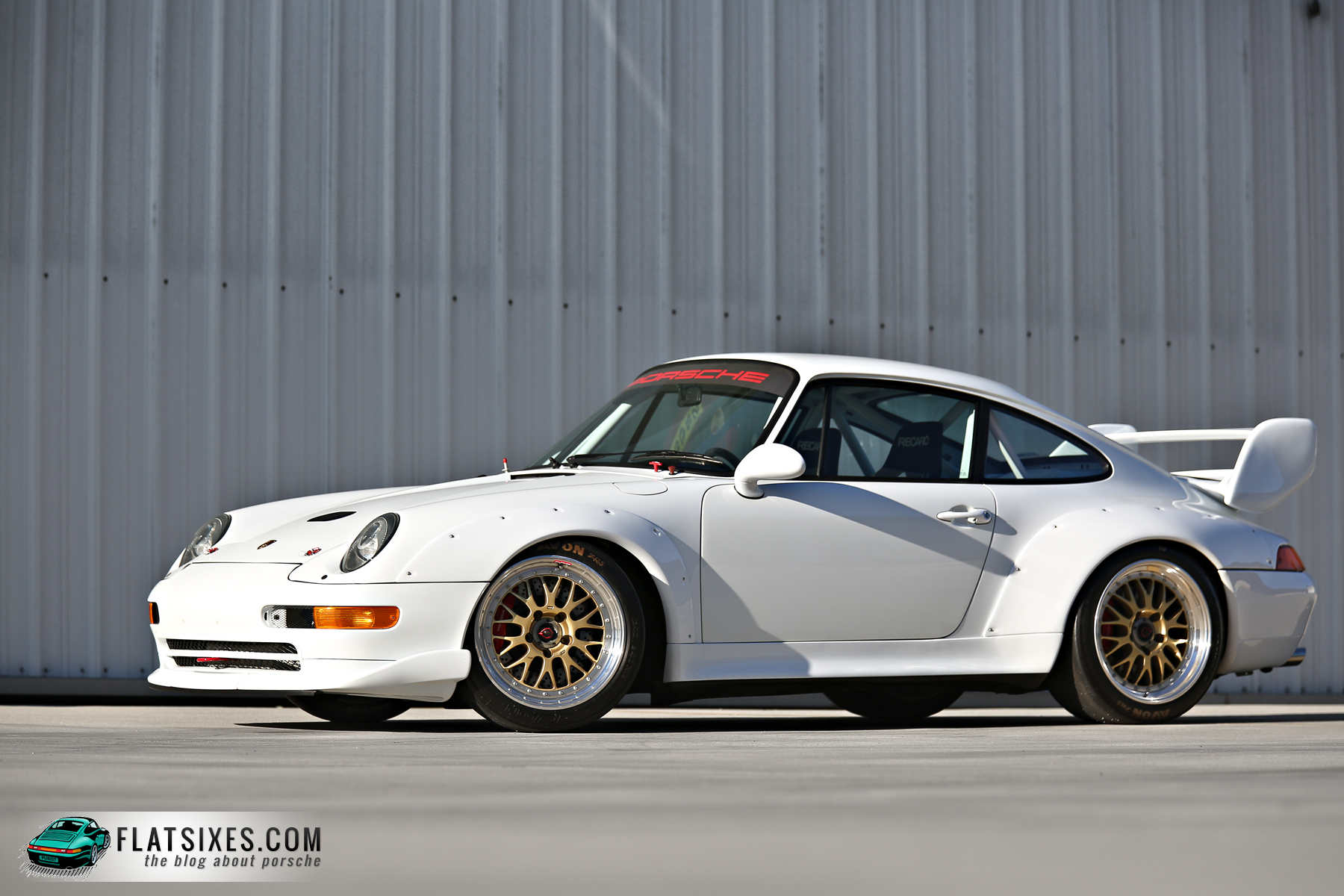
Chassis: WP0ZZZ99ZVS398070 Engine: 62P85712
Delivered new to Mizwa Motors, the Japanese Porsche distributor, this RSR was built in early 1997 specifically for the Japanese market, though it was constructed to European specification. As such, the RSR was equipped with the M64/75 engine designed for endurance racing and rated at 340 bhp. This highly tuned 3.8-liter racing engine featured a resonance intake system, six intake plenums with separate throttle valves, a different camshaft profile, and no catalytic converters. Like most RSRs equipped with this engine, this Porsche was specified with the type M50/34 close-ratio six-speed transaxle. Originally finished in Firnweiss (Snow White), the RSR was purposefully equipped with a Premier 75-liter fuel cell, Matter roll-cage, Recaro racing bucket seats, Sabelt harnesses, and MOMO steering wheel, along with an integrated fire system and air jacks.
This RSR remains one of the only of its kind to never have entered any kind of competition, and remains more or less in as-delivered condition, and shows only about 3,700 miles on the odometer. As you can expect of such a low-mile car, this 3.8 RSR features its original engine, making it quite desirable among collectors. The Cup 3.8 RSR remained in Japan until it was acquired through a German broker and imported it into the US under the EPA’s racing exclusion for Mr. Seinfeld’s use. This is an extremely rare iteration of an extremely desirable car that was never offered for use in the United States, making it even more rare still on these shores.
Lot 042 – 1958 Porsche 597 Jagdwagen (Est. $350,000 – 425,000)
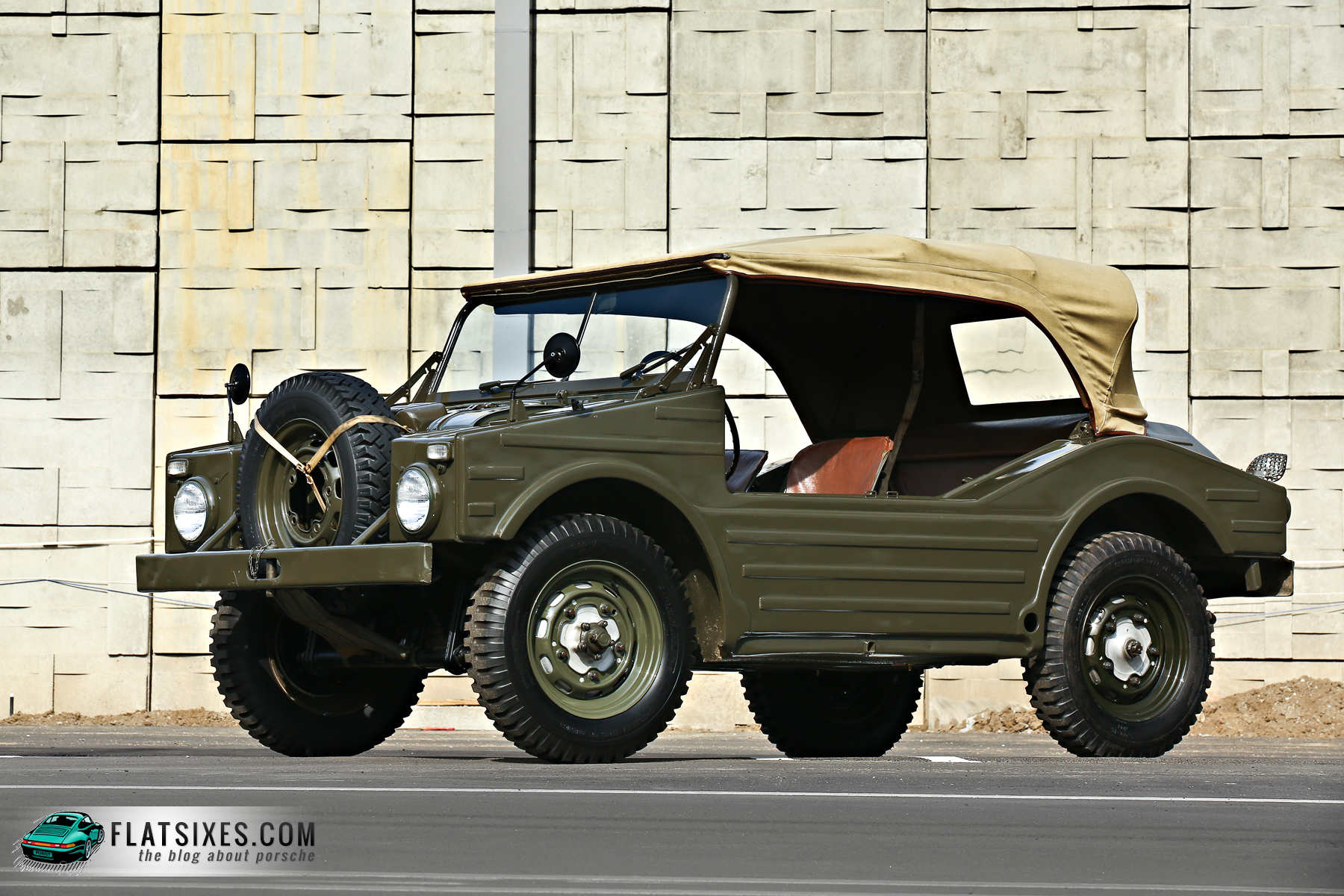
Following WWII, Germany was heavily demilitarized, but by 1954 was ready to become a more active member of the NATO alliance; thus, the Federal Army needed a transport vehicle. Borgward, Auto Union, and Porsche all entered proposals; Porsche’s Type 597 employed an industrial-spec variant of the proven, and robust, 356 engine, and it utilized four-wheel drive and a stamped steel monocoque chassis for increased rigidity and buoyancy. Though the contract was offered instead to DKW’s Munga, Porsche chose to produce the Type 597 for consumer use under the name Jagdwagen; ‘Hunter’s car’.
Only 71 Jagdwagen were produced, and only about 15 of them are thought to still exist, making them quite rare beasts. This is one of the latest production Jagdwagen, and was delivered new to Wendell Fletcher of Pasadena, CA. Fletcher, owner of Fletcher Aviation, and sponsor of Porsche’s Carrera Panamericana Hans Herrmann/550 Spyder effort, received the car in conjunction with his position as Porsche’s North American distributor of industrial engines. Though unrelated to the Jagdwagen, Wendell flew his personal plane the length of the Mexican road race in order to supply the factory race team with parts they needed during the event.
In 1987, at the ripe old age of 92, Fletcher decided to sell his Jagdwagen, moving it on to Porsche authority Prescott Kelley. In 1998, Kelley sold the 597 to Cal Turner III, and bought it back from him in 2005. In 2010, Mr. Seinfeld took ownership from Kelley. As it sits, the off-road machine has only traversed 24,000 kilometers from new, and remains absolutely original, still retaining its original vinyl seat covers, fabric top and side curtains. Quite possibly the most original and nicest kept Jagdwagen of the 15 still remaining on the planet.
Lot 043 – 2012 Porsche 911 (997) GT3 Cup 4.0 Brumos Commemorative Edition (Est. $300,000 – 500,000)
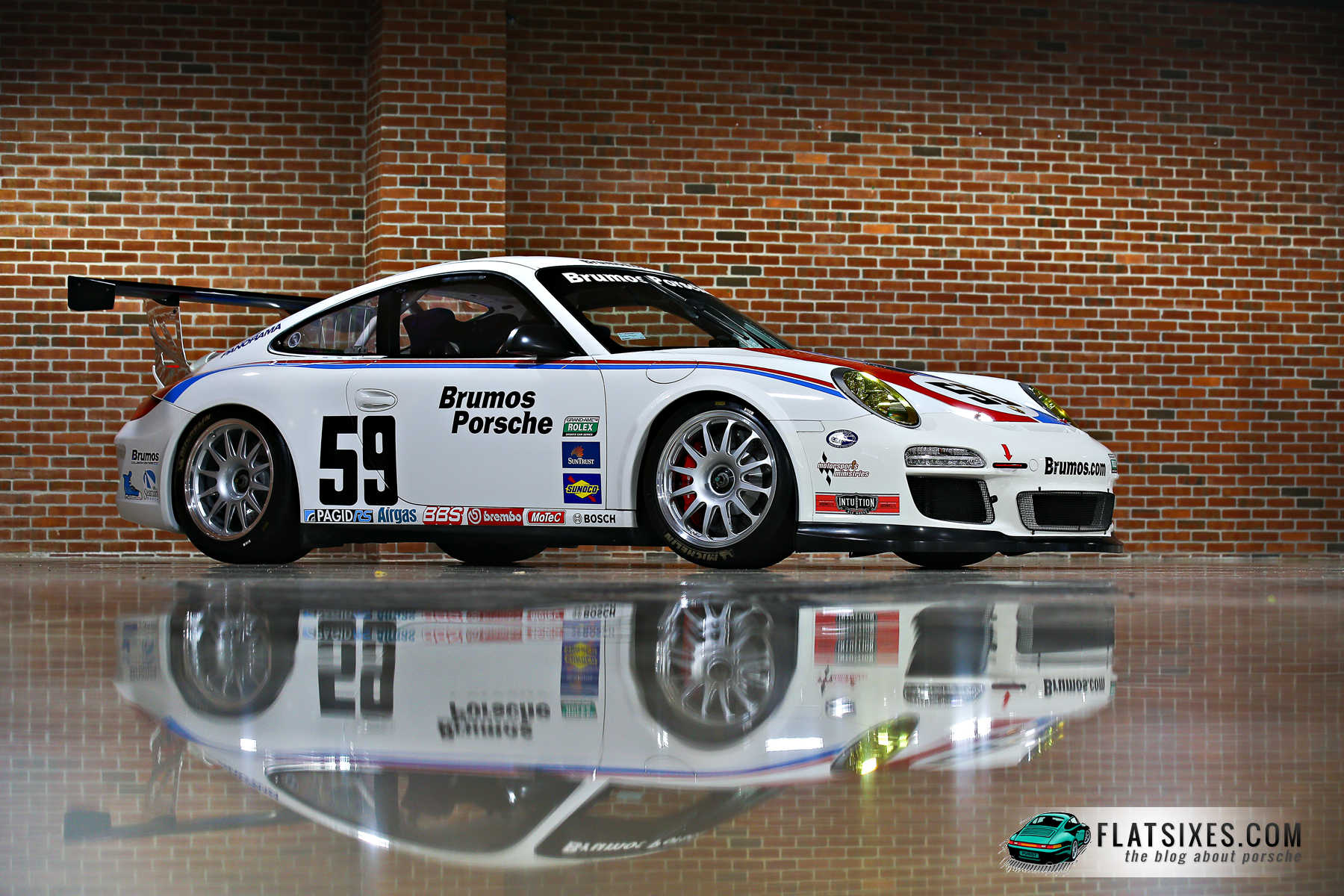
At the end of the 2011 racing season, Brumos Racing won the Grand-Am Championship – a credit to the inherent abilities of the 997 GT3 Cup and the efforts of team drivers Leh Keen and Andrew Davis. To commemorate this accomplishment, Brumos made an arrangement with Porsche to offer the last five US-spec 2012 GT3 Cup cars exclusively as Brumos Commemorative Editions. The factory-built racing cars were meticulously prepared by Porsche Motorsports North America to match the unique specification used by Brumos for the previous year’s assault on the Grand-Am championship. Changes included increasing the engine capacity to 4.0 liters from the 3.8 liters of the standard car, a Motec data acquisition system with steering and wheel sensors, and a throttle blipping system to help with cleaner downshifts. All five cars were finished in the classic Brumos livery of white with blue and red stripes, along with details that mirrored the 2011 championship-winning car and special graphics denoting the commemorative model itself.
Jerry Seinfeld purchased this car directly from Brumos Porsche as soon as he heard that the special-edition Cup car would be made available to private owners. A testament to the special nature of these vehicles, Brumos hosted a gala dinner on September 20, 2012, for the five new owners at the team’s racing facility in Jacksonville, Florida. Hosted by Brumos Vice President Hurley Haywood and driver Leh Keen, the event was used to present the cars to their respective owners and give each of them a full introduction to the model’s unique features.
This limited-edition four-liter GT3 Cup was driven by Jerry Seinfeld at a private track day at Willows Spring Raceway in California and has approximately 1 to 1.5 hours of running time on it from new. The Porsche was recently serviced, is accompanied by its factory operations manual, and is ready for a new steward to enjoy its fantastic appearance and performance.
Lot 044 – 1973 Porsche 917/30 Can-Am Spyder (Est. $5,000,000 – 7,000,000)
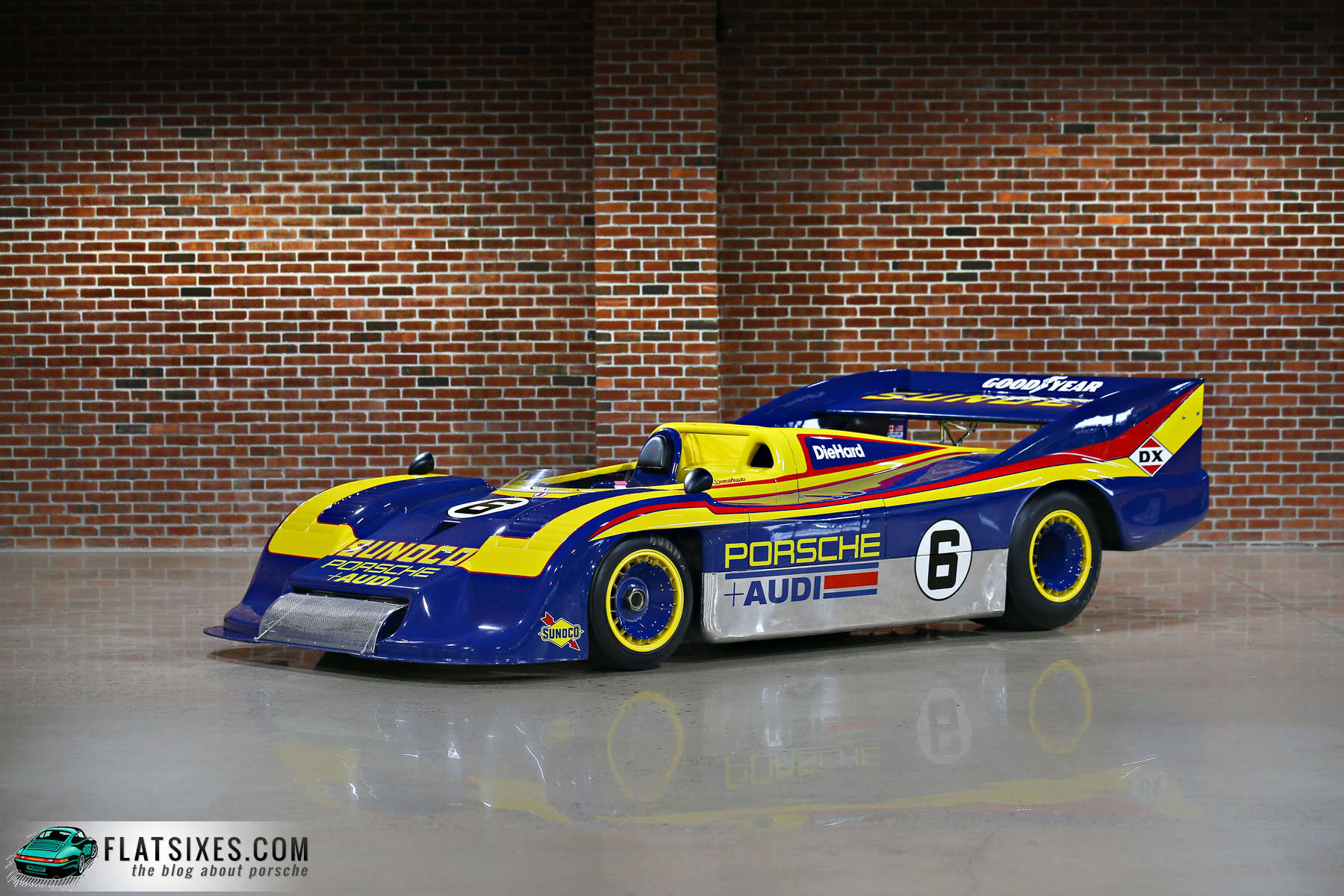
Chassis: 917/30-004
This 917/30 is among the pantheon of iconic Porsche racing cars, and deservedly so. In 1973, Porsche and Penske Racing were busy dominating the SCCA’s Can Am series. I’m sure you know the story of the 917/30, so I won’t bore you with the details, but this car helped cement Porsche as a world power, and essentially ended Can Am as a series because it was so dominant. This exact car was actually sold as part of the Matt Drendel collection in 2012 following Matt’s untimely death, which is when Seinfeld purchased the 12-cylinder turbo monster for a bargain price of only $4.4 million.
This chassis, #004, was among the last 917/30s produced. The car was built with the intention of running it in the 1974 season, but unfortunately the rules changes for that season would eliminate the 917/30 from contention (mandating at least 2.74 miles per gallon in a 200 mile race, which couldn’t conceivably be achieved without making the car far too slow). With dreams of 1974 Can Am domination now dead, Porsche sold the chassis to Alan Hamilton, an Australian Porsche importer, who kept the car in his showroom in Melbourne. The car remained in Australia until 1991, occasionally being used for historic races for that period, until it was returned to Stuttgart when Porsche bought out all of the independent Australian dealerships. In Porsche’s care, the previously all-white car was restored and given Penske’s familiar 1973 Sunoco livery.
Porsche used the 917/30 as a show car at events like the Old Timer Grand Prix, and kept the car until 1994, at which point it was sold to American collector David Morse. Prior to the sale, Porsche used their last remaining 917 engine case to give the car a fresh engine rebuild. Upon arrival in the US, Morse set about restoring the 917 properly, and it made its debut in fresh restoration at the 1998 Monterey Historics.
In 2001, Morse sold the car to Matt Drendel where it resided among a couple dozen other significant Porsche race and street cars, most of them turbocharged. His first order of business was to display the car at Rennsport Reunion I in July of 2001. Drendel sadly died in 2010, and his entire collection was auctioned off at Ameila Island just four short years ago. This car, at the time, set the record for most expensive Porsche ever sold at auction (which has since been more than doubled). It is safe to say that when it sells this week, it should easily eclipse its 2012 value.
Lot 045 – 1994 Porsche 911 (964) Turbo 3.6L S Flachbau (Est. $1,000,000 – 1,300,000)
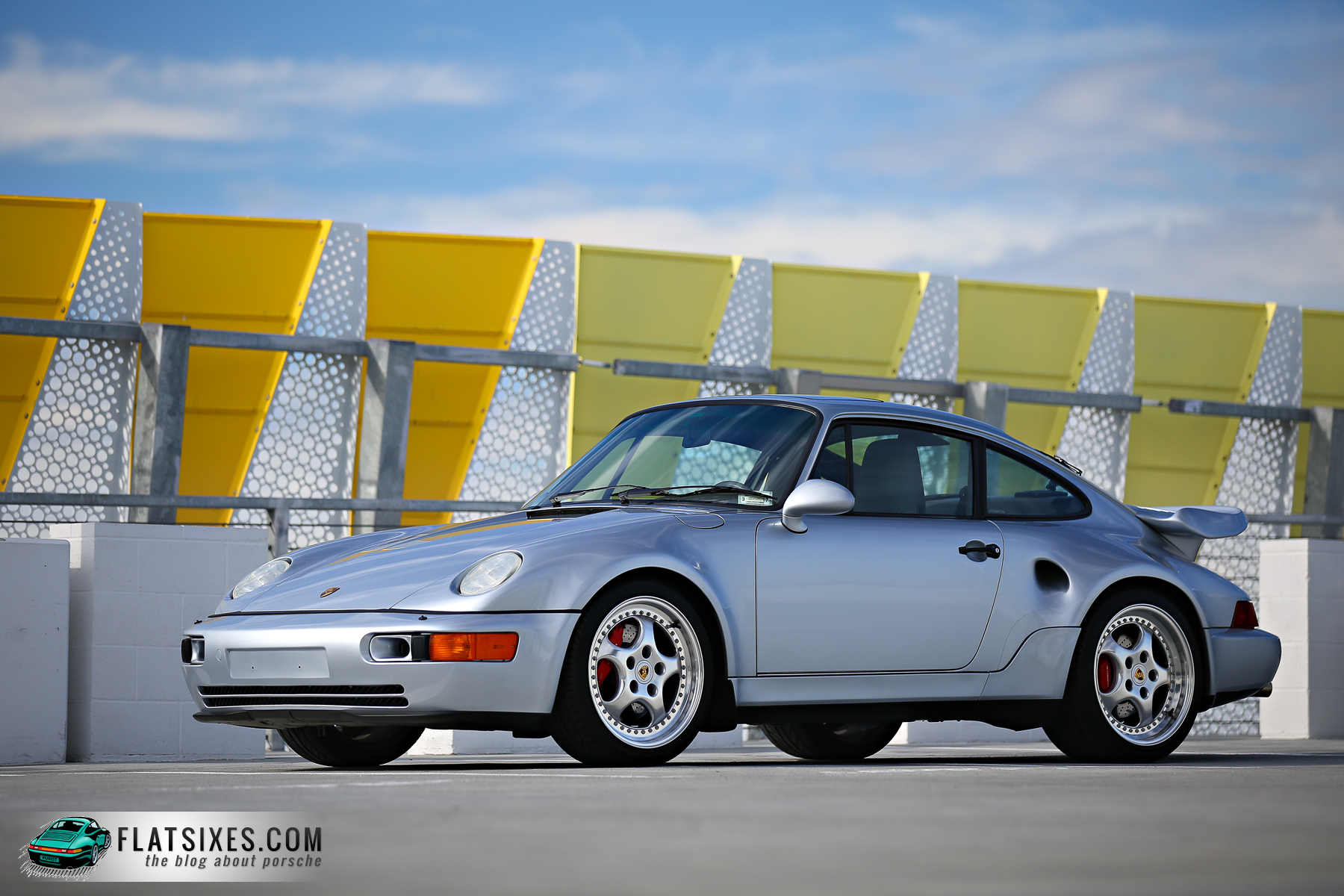
Chassis: WP0AC2968RS480403 Engine: 61R00895
Only three private owners have held the keys to this Flachbau, and driven it only just over 12,500 miles since new. Add those facts with the statistic of only 76 such 964 Turbo 3.6 S Flachbau cars built, and you’ve got a recipe for high-dollar auction action.
The X85 Flachbau presented here, chassis no. 480403, is believed to be the sole example originally finished in Polar Silver Metallic. As evidenced by its factory production codes, this car was originally optioned with driver’s seat four-way electrical lumbar support, sunroof, 18″ polished three-piece Speedline wheels, wheel caps with the Porsche crest, and draped Classic Grey leather upholstery. According to Mark Smith’s comprehensive Flachbau registry, this car originally commanded a staggering $164,866 MSRP.
Completed on December 3, 1993, this Turbo S was sold new through Brumos Porsche and delivered to its first owner, Dr. Randall Riegler of Ponte Vedra Beach, Florida, in February 1994. It is believed that Dr. Riegler retained the Porsche for over two decades and drove it sparingly, finally selling the car in spring 2014. Jerry Seinfeld acquired the Flachbau from a discerning Southern California-based collection, and it has been an important part of the Seinfeld stable since.
This Porsche Exclusive-built Turbo S presents in as-new condition, showing just 12,545 miles at the time of cataloguing. As would be expected of a well-kept, low-mileage example, this car remains in outstanding original order and is accompanied by its tool roll, air compressor, and handbook folio, including the owner’s manual, radio manual, dealer directory, and the warranty and customer information book.
Lot 046 – 1958 Porsche 356A 1500 Carrera GS/GT Speedster (Est. $2,000,000 – 2,500,000)
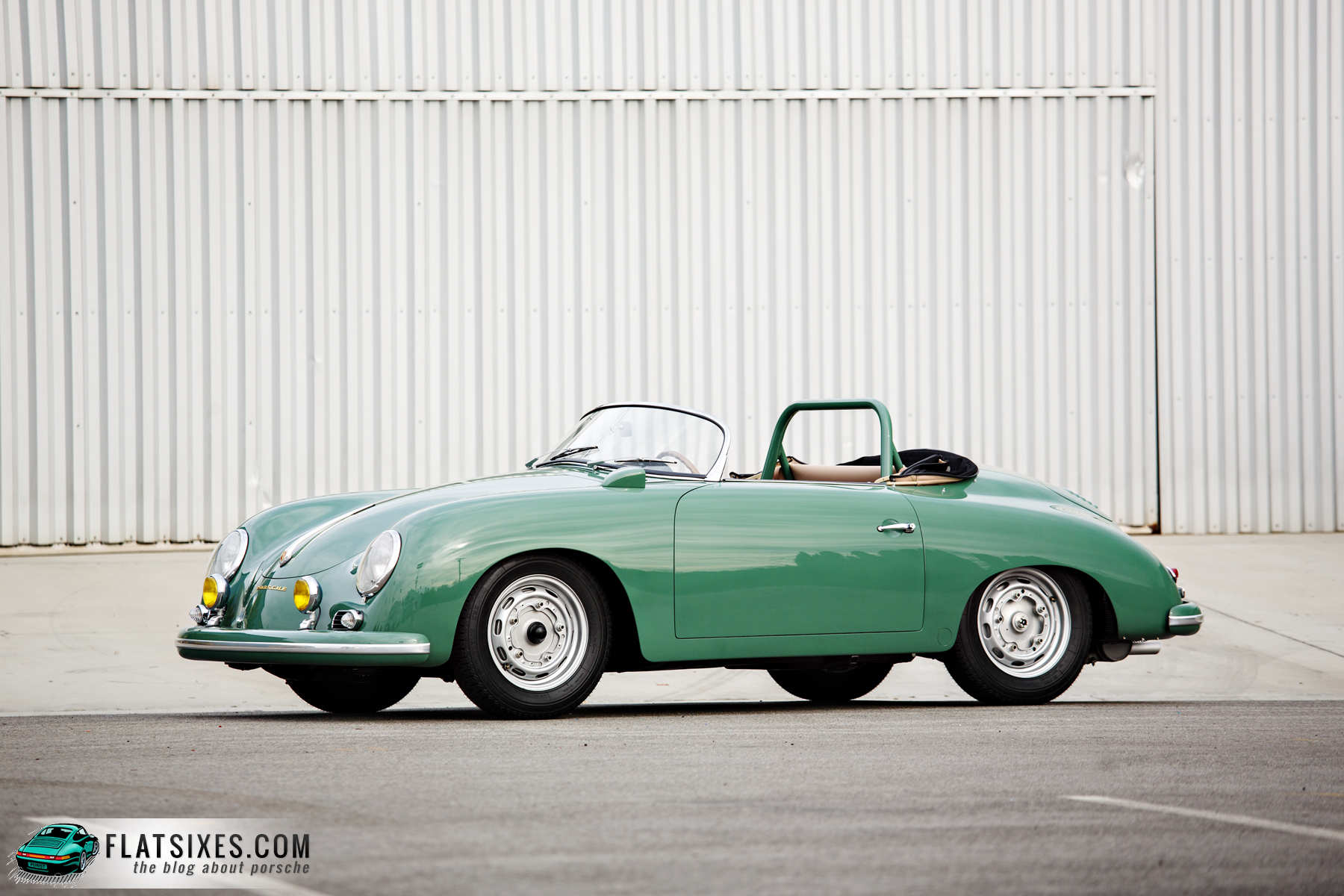
Chassis: 84908 Engine: 91015
If you haven’t figured it out by now, I’m something of a four-cam fanatic, and this could be one of the most desirable iterations of Carrera ever produced. This Carrera Speedster GS/GT was completed in May 1958, and has been a stunner ever since.
The Typ 692/0 four-cam engine in this car (a late production Hirth roller-bearing crank version) is original to the car, though the car is not original to the engine. The engine originally installed in this car, no. 91015, was first installed in another GS/GT Speedster, chassis 84912, sold new to amateur racer Leo Levine. Shortly after taking delivery of his Carrera Speedster, Mr. Levine requested that the Speedster’s four cam be replaced with a pushrod 1600 Super; the Speedster’s 692/0 engine was then placed in 84908 prior to its delivery. The type 692 is essentially identical to the earlier 547 engines, though updated to the V-drive type distributor to make timing a slightly less difficult affair.
This is the only known Carrera Speedster to have been finished in Auratium Green, and one of only 13 Speedsters (regardless of type) to feature the color option. As was common with many GT-specification Carreras, this car was sold to its first owner through the Porsche factory rather than through a distributor. While little is known of the Carrera Speedster’s early history, it is believed that the Porsche was exported to the US and subsequently raced in the Midwest through the 1960s and into the early 1970s.
About 6 years ago, Nick Clemence, proprietor of European Collectibles in Costa Mesa, California, purchased the Speedster in unrestored condition through a broker who represented the car’s long-term owner. In a letter from European Collectibles provided to Gooding & Company, Mr. Clemence described the condition of 84908 when it arrived at his shop in California.
“When I purchased the Speedster the engine was out and in pieces. The body was together, floors were weak and needed to be replaced and the battery box needed replacement as well. The usual dings and dents but the Speedster was mostly complete.”
Over the next three years, European Collectibles performed a ground-up restoration, with the intention of returning the Carrera Speedster to original spec. According to Mr. Clemence, no expense was spared in the restoration, and having seen the work they do with my own eyes, I believe that to be the case. Rare OEM and new old stock components were used whenever possible and prominent four cam specialist Bill Doyle of the Rennwagen Motor Company, just around the corner from European Collectibles, was hired to rebuild the engine. Taken down to the metal and carefully prepared, the bodywork was then repainted in Kardex-proven Auratium Green and the interior trimmed in black vinyl. Befitting the car’s original spec, this Carrera Speedster was generously equipped with all the best period accessories including auxiliary fog lights, a Spyder mirror, sport exhaust, and GT roll bar finished in matching paint.
Completed in 2012, the Carrera Speedster made its post-restoration debut at the 24th Annual Dana Point Concours d’Elegance hosted by the 356 Club of Southern California. Judged in the highly competitive Full Concours category, 84908 achieved a remarkable 298.6 score (out of 300) and earned First in Class honors – a testament to the accuracy and quality of the car’s presentation. That August, the Carrera Speedster was displayed in Carmel Valley, California, at the Quail Motorsports Gathering, where it was selected as Best in Class from a field of 59 postwar sports cars.
Acquired by Jerry Seinfeld in late 2012, the 1500 GS/GT Carrera Speedster has been a prized fixture in the collection ever since. Though it has been regularly exercised and enjoyed on weekend drives, it remains in exquisite concours-quality condition in all respects, and has benefited from further attention by noted four-cam specialist Adrian Gang.
Significantly, the hood and deck lid are both stamped with the last three digits of the chassis number (908) and the engine type and serial number stampings (692/0 and 91015, respectively) match the factory records. As would be expected of an award-winning show car, this Carrera Speedster is offered with a Porsche Certificate of Authenticity, copy of the factory Kardex, tool roll, jack, and handbook set, which includes a 356 A owner’s manual, Speedster driver’s manual, and supplement for cars with the 1500 Carrera engine.
Lot 048 – 1959 Porsche 718 RSK (Est. $3,800,000 – 4,200,000)
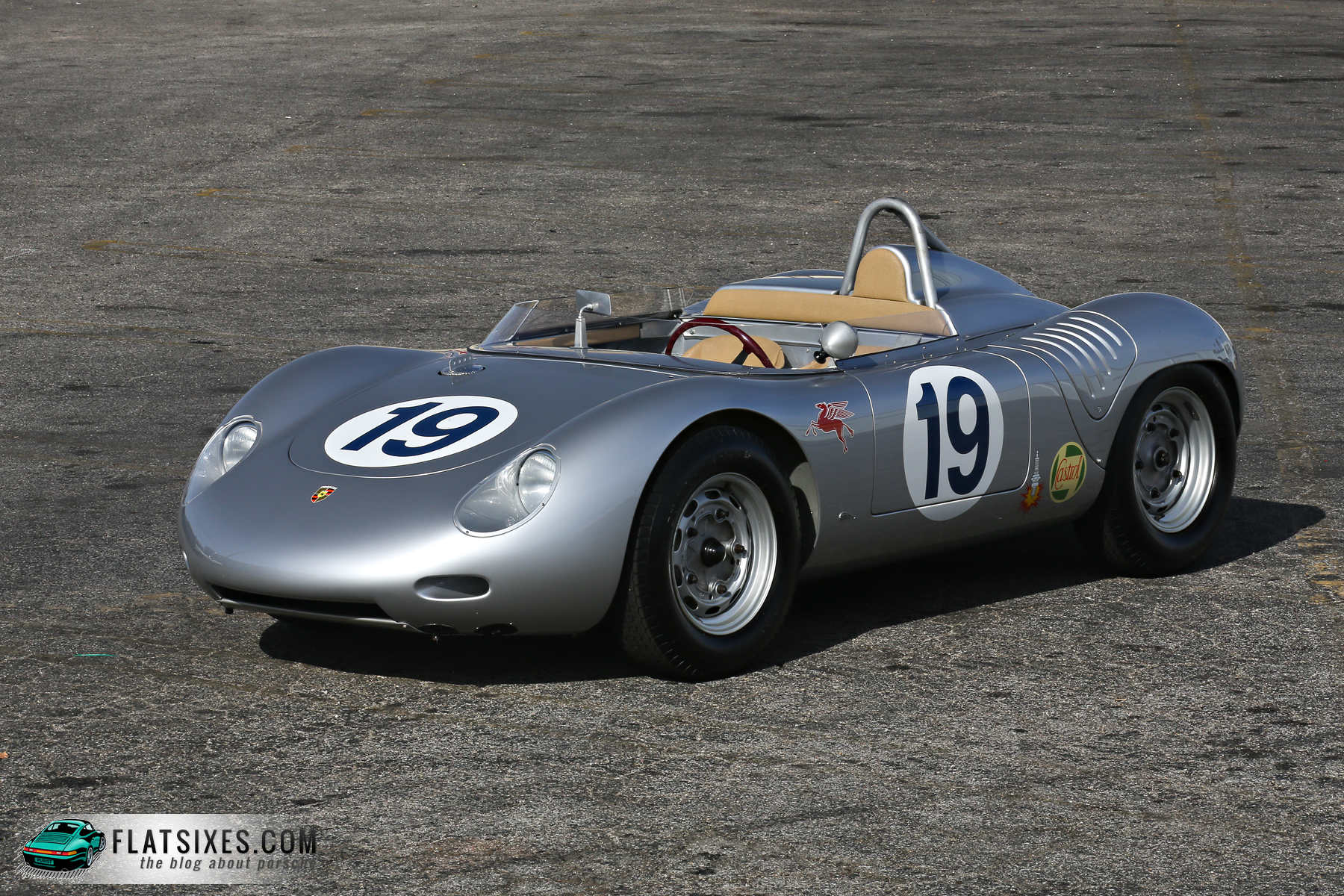
Chassis: 718-019 Engine: 90322
One of only 34 of its kind, this Type 718 RSK Spyder is one of the most beautiful iterations of Porsche’s Spyder line. Essentially a Formula 2 car with closed fenders and a pair of seats, this RSK was a top-level racing sports car in its day, and could take down much more powerful cars with its handling prowess and high cornering speeds. A dry weight of 1168 pounds was responsible for much of the car’s success, but the 140 horsepower Typ 547 engine sure didn’t hurt. This particular car saw a lot of action here in the United States in the late 1950s and early 1960s, and was driven by the legendary Roger Penske in almost every race it ever competed, racking up an impressive list of victories along the way.
Built, as all race cars were, in Porsche’s legendary Werk 1, 718-019 was built to the specification of privateer RSK, and fitted with a Typ 547/3 four-cam engine (number 90211), finished in silver with polished steel-center wheels, and fitted with Continental racing tires. Porsche’s factory records indicate that it was shipped stateside from the outset, and likely was sold new to Harry Blanchard for use in the 1959 season of SCCA racing. Blanchard presumably used the car for only a handful of races, including the SCCA National at VIR, the SCCA National at Bridgehampton, and the USAC race at Lime Rock Park throughout May and June of that year. By the end of June, supremely talented racer Roger Penske was placed in the car and had taken it to the June Sprints at Road Atlanta, already taking a podium. Penske, only 22 years old at the time, owned the car through the end of the 1960 season, and made quite a name for himself and the car.
In January 1960, Harry Blanchard was killed in an accident at Buenos Aires, while driving another Porsche Spyder, and ownership of 718-019 transferred to Roger. The 1960 SCCA season proved to be a tremendous success for Penske as he won that year’s F-Modified Championship, thanks in large part to his victories behind the wheel of 718-019. In 1960 alone, Penske and his RSK captured class or overall wins in more than 10 race outings.
Shortly after the 1960 season, Penske sold the 718 RSK to a college buddy of his, fellow SCCA driver/car dealer, Lake Underwood. During his ownership of 718-019, Underwood captured an overall win at Vineland in the modified race. Following a several-year absence from racing, the RSK reappeared in California, where Bob Jones of Jones Racing Enterprises entered the Spyder throughout the late 1960s in races at Laguna Seca, Vacaville, Cotati, and Sears Point.
In 1970, John Beam, an amateur racer in the San Francisco Bay Area, purchased and then modified the RSK. At the time, the car was just another old race car, so Beam set about installing fiberglass fender flares, wide wheels, a full-width roll bar, and an 1,800 cc pushrod engine in place of the more complicated four-cam piece. Refinished in green with bright orange trim, the 11-year-old Porsche Spyder was entered in an SCCA race at Riverside, where it was seen competing against more modern 906s and 910s. Later that year, 718-019 caught fire in Beam’s garage, damaging the aluminum bodywork and ending its decade-long racing career.
From there, the RSK passed to Rudy Klein, who then sold it in 1974 to Harry Haggard of Palos Verdes Estates, California. Mr. Haggard, who also owned an RS60 and a 904, decided to restore the RSK as a road car, enlisting Dave Kent’s Creative Car Craft and Don Borth to repair the bodywork. By 1986, Haggard’s dream of making 718-019 street legal had petered out; the car was sold to California Porsche enthusiast Dirk Layer, who in turn sold the car to collector and vintage racer Tom Trabue of Columbia, Missouri. Lots of ownership changes occurred, and it’s somewhat difficult to follow sometimes. Again, even then the car was viewed as just another old race car that was well past its prime.
Finally, in 1993, Trabue decided to turn his attention to the RSK project and commissioned noted restorer and fabricator Joe Cavaglieri to make the car like new again. Though the restoration was a challenge, necessitating the fabrication of new aluminum bodywork and extensive frame repairs, the process was aided by the use of factory blueprints and access to a very original 718 Spyder. After several years, Mr. Cavaglieri’s efforts resulted in one of the finest and most accurate restorations ever carried out on an RSK. Once completed, Mr. Trabue campaigned 718-019 in vintage races, including the Monterey Historics. The car remained in Trabue’s care until 2000, when he sold to famed Los Angeles collector Otis Chandler.
Chandler didn’t hang on to 718-019 for very long, as it then joined the Jerry Seinfeld Collection in 2001. In the fall of 2003, Mr. Seinfeld entered the RSK in the Colorado Grand, the grueling 1,000-mile high elevation blast through the Rocky Mountains. In 2014, the Spyder was loaned to Porsche Cars North America for a media event held at Laguna Seca, and later was exhibited at the Concours on the Avenue in Carmel-by-the-Sea. Most recently, 718-019 was featured in an episode of Mr. Seinfeld’s Comedians in Cars Getting Coffee, the one with Kevin Hart.
718-019 presents as a stunning example of a period-correct four-cam Spyder and is well known and respected among knowledgeable marque specialists. Driven in period by the legendary Roger Penske, this RSK went on to compile an enviable competition record, racing at major North American venues for over a decade. Its impressive racing pedigree, outstanding restoration by Joe Cavaglieri, and eligibility for leading historic events around the world make this a Porsche that is worthy of any collector’s attention. Will this car actually sell for 4 million dollars? I remain unconvinced, but only time will tell.
The auction begins this Friday, March 11th at 11:00 AM eastern time, and can be live-streamed on Goodingco.com free of charge. For those in Florida for the Amelia Island festivities, you can attend the beachfront auction for a $30 fee.
Racquet Park, Omni Amelia Island Plantation
6800 First Coast Hwy
Amelia Island, FL 32034
(1 mile south of Amelia Island Parkway)
